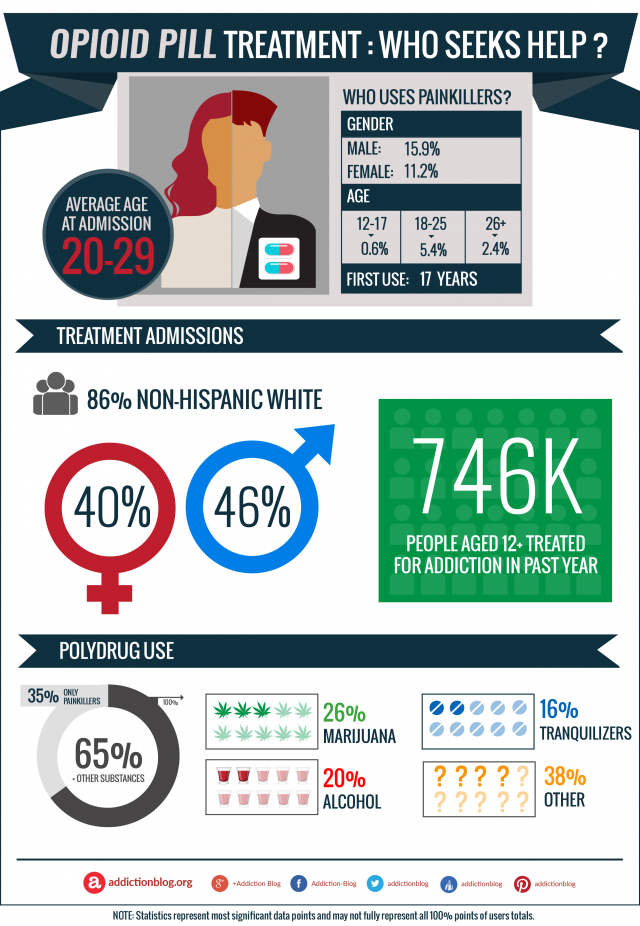The opioid epidemic in the U.S.
In 2012, health care providers wrote 259 million prescriptions for opioid pain medication, enough for every adult in the United States to have a bottle of pills. Furthermore, opioids such as:
- hydrocodone
- oxycodone
- tramadol
…were involved in 28,648 deaths in 2014, according to the CDC. These numbers amplifies the need for addiction treatment. Although chronic pain needs managing, the use of pain killers in such large numbers presents serious risks, including deadly opioid overdose and drug use disorder (thus the name opioid crisis)…so available treatment options are needed more than ever.

Who needs treatment for opioid pill addiction?
In 2013, on the basis of DSM-IV diagnosis criteria, an estimated 1.9 million American citizens abused or were dependent on prescription opioid pain medication.
Q: What are the diagnostic criteria?
A: Well, they’ve varied over time…
Opioid use disorder is viewed as a problematic pattern of drug use leading to clinically significant impairment or distress. Drug problems can be identified through three main criteria.
- Unsuccessful efforts to cut down or control use.
- Use resulting in health problems, social problems, or financial problems.
- Failure to fulfill major role obligations at work, school, or home.
In addition, having a history of a prescription for an opioid pain medication increases the risk for overdose and opioid addiction. This highlights the need for safer prescribing practices for clinicians.
Who gets opioid addiction treatment?
The proportion of admissions for primary opiates other than heroin increased from 3% to 8% of admissions aged 12+ from the year 2004 to 2014, respectively.
- Opiates represented 27% of all primary opiate admissions in 2014.
- 53% of treatment admissions were male.
- The average age at admission was 33 years.
- Approximately 84% of opiate admissions were non-Hispanic White.
- More than one-half or 60% of treatment admissions reported oral as the usual route of administration. While 17% of those entering treatment reported inhaling or injecting opioids.
How is opioid pill addiction treated?
The two main categories of drug addiction treatment are:
1. Behavioral treatments (such as contingency management and cognitive-behavioral therapy) help you stop your opioid use or abuse by changing unhealthy patterns of thinking and behavior, teach you strategies to help you manage cravings and avoid cues and situations that could lead to relapse, and/or providing incentives for abstinence. Behavioral treatments, may take the form of:
- individual therapy
- family therapy
- group counseling
2. Medications are used to counter the effects of opioids on the brain or relieve opioid withdrawal symptoms and cravings, and help you avoid relapse. Medication therapy are used along with psychosocial supports or behavioral treatments, and includes:
- buprenorphine
- methadone
- naltrexone
Opioid addiction treatment questions
You can learn more about the opioid addiction treatment process and programs or get help by calling our free and confidential hotline on 1-877-721-6695 NOW. Recovery advisors are available to speak with you 24 hours a day, 7 days a week and offer information about opioid treatment programs.
If you have additional questions, please feel free to post them in the designated section at the bottom of the page. We value your feedback and try to provide personal and prompt answers to all legitimate inquiries.








Related Posts